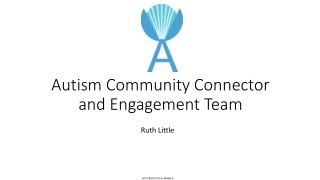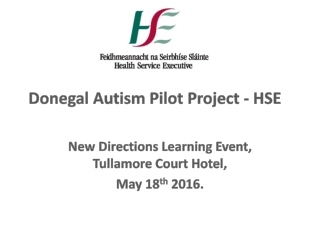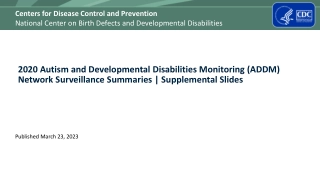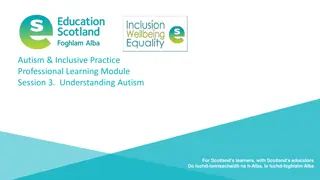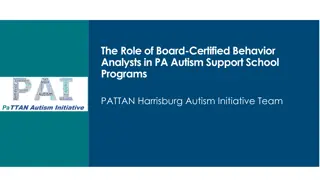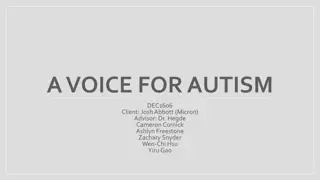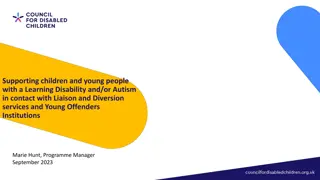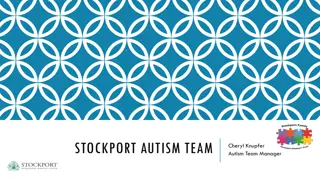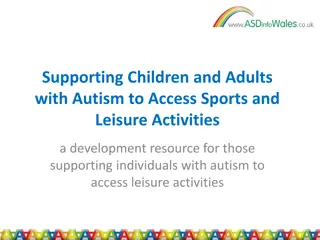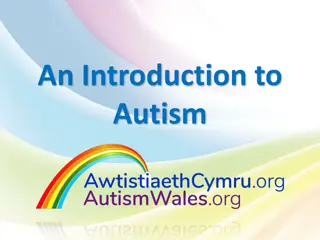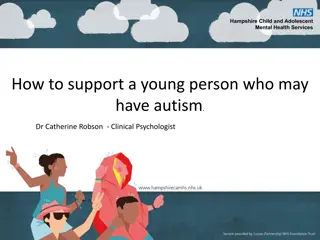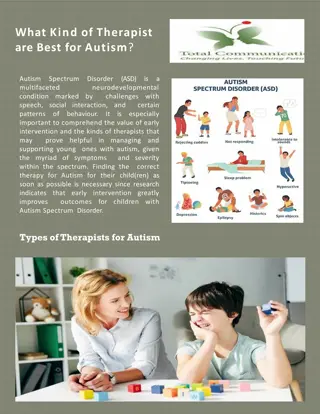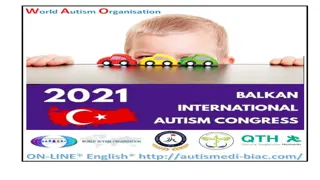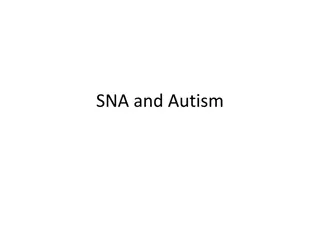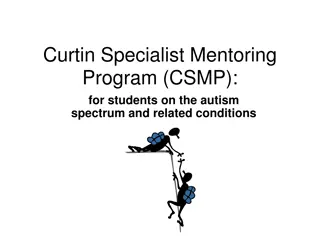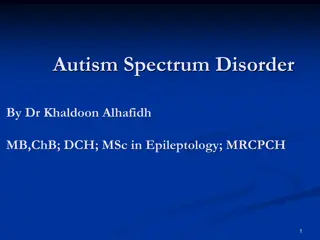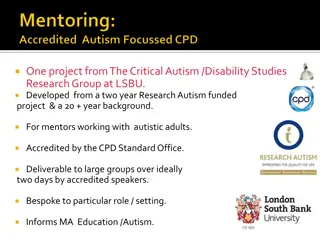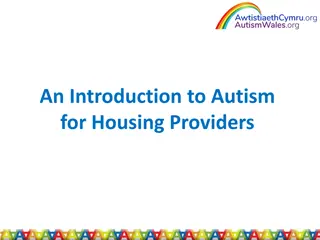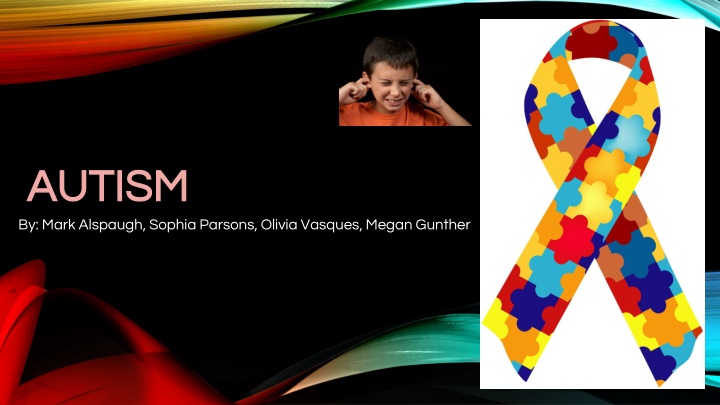
Autism: Symptoms, Causes, and Effects
Explore the origins, symptoms, and effects of autism spectrum disorder (ASD). Learn how ASD is diagnosed, its genetic components, and the challenges individuals with autism may face in daily life. Gain insights into the complexity of autism and how it can impact social interactions and mental well-being.
Download Presentation

Please find below an Image/Link to download the presentation.
The content on the website is provided AS IS for your information and personal use only. It may not be sold, licensed, or shared on other websites without obtaining consent from the author. If you encounter any issues during the download, it is possible that the publisher has removed the file from their server.
You are allowed to download the files provided on this website for personal or commercial use, subject to the condition that they are used lawfully. All files are the property of their respective owners.
The content on the website is provided AS IS for your information and personal use only. It may not be sold, licensed, or shared on other websites without obtaining consent from the author.
E N D
Presentation Transcript
AUTISM AUTISM By: Mark Alspaugh, Sophia Parsons, Olivia Vasques, Megan Gunther
Autism -(Awe tiz um) Alternate names: Classic Autism, and Autistic Disorder How it was discovered: It was used in the early 1900 s to describe a distinguished order from schizophrenia. When: Early 1900 s Where: America/Switzerland Who: Eugen Bleuler and Leo Kanner How: In 1911 Leo Kanner, a Swiss psychiatrist coined in the term Autism to describe withdrawal into one s inner world , a phenomenon he observed in individuals with schizophrenia. -In 1943 Leo Kanner, an Austrian-born American psychiatrist distinguished the disorder from schizophrenia. The use of the word Autism to describe the condition as it is known today originated in that year because of Leo Kanner. Cite: Blatt,Gene. Autism. Britannica.web.2,Feb.16.
Autistic Spectrum Disorder Autistic Spectrum Disorder is inherited not by parent to child but arise spontaneously. While these mutations help explain how ASD develops information of causes, they don t help us understand why autism so often runs in families. Doctors diagnose ASD by looking at a child s behavior and development.
This diagram shows the causes of autism and how likely something caused the disease. The graph shows that most cases of Autism are caused by reasons unknown or multiple things cause it. https://nagenomics.wordpress.com/author/nagenomics/ ASD occurs in all racial, ethnic, and socioeconomic groups, but is almost five times more common among boys than among girls. ASD tends to occur more often in people who have certain genetic or chromosomal conditions, such as fragile X syndrome or tuberous sclerosis. However, these specific conditions can only explain a small number of ASD cases.
Symptoms of Disorder No smiles or any warm joyful expressions by six months or more No back and forth sharing of sounds, smiles or other facial expressions Hard to communicate with others Stereotypical behavior Playing with toys in an unusual or repetitive way Avoid eye contact Have unusual reactions to the 5 senses
Effects of Autism Difficulty understanding what is happening around them: Can create insecurity and anxiety on a daily basis which is often expressed through various stress reducing behaviors: Rocking, tantrums, punching and others. Often experiences failing work and social situations and at school: This is because of their lack of understanding, and this can cause mental problems like depression and high anxiety. People with autism are more vulnerable : Friends may bully and/or takes advantage of the autistic person.
Diagnosis There is no medical tests to diagnosis autism There is no medical tests to diagnosis autism Specially trained physicians and psychologist have behavioral evaluations Specially trained physicians and psychologist have behavioral evaluations Parents usually detect it first because they don t make eye contact, not Parents usually detect it first because they don t make eye contact, not responding to his or her name or playing with toys in a weird and repetitive ways. responding to his or her name or playing with toys in a weird and repetitive ways. Parents can take a list of questions that can determine if their child needs Parents can take a list of questions that can determine if their child needs further evaluation by a professional further evaluation by a professional https://www.autismspeaks.org/what https://www.autismspeaks.org/what- -autism/diagnosis autism/diagnosis
Prognosis Most autistic people live from 18-21 Limitations they may face are . Uneven set of skills Difficulty developing motivation to study areas not of interest Difficulty perceiving emotional states or other Difficulty telling the truth Difficult expressing empathy Difficulty in screening out background noise
FRAGILE X SYNDROME ONE GENETIC CAUSE FOR ASD Fragile X syndrome (FXS) is a genetic disorder. A genetic disorder means that there are changes to the person s genes. o FXS is caused by changes in the fragile X mental retardation 1 (FMR1) gene, located on the X chromosome. o The FMR1 gene usually makes a protein called fragile X mental retardation protein (FMRP). o FMRP is needed for normal brain development. People who have FXS do not make this protein. o FXS can be diagnosed by testing a person's DNA from a blood test. There is no cure for FXS. However, treatment services can help people learn important skills. The exact number of people who have FXS is unknown, but it has been estimated that about 1 in 4,000-5,000 males are born with the disorder. Therefore, FXS could explain a few but not all cases of ASD. Source: http://www.cdc.gov/ncbddd/fxs/facts.html Source: https://www.genome.gov/19518828
The FMR1 gene tells the cell how to make a specific protein (FMRP) that is essential for normal brain development. The FMR1 gene begins with triplet repeating groups of the nucleotides CGG (C = Cytosine; G = Guanine). o In most people, there are 6-44 repeats o In other people, there are 45-200 repeats o Fragile X syndrome occurs when there are more than 200 repeats; when this many CGG repeats occur (a full mutation), the FMR1 gene turns off and does not produce FMRP. This is the cause of 95% of the cases of Fragile X syndrome. o A specific genetic test (polymerase chain reaction [PCR]) can be performed to diagnose fragile X syndrome. o Both boys and girls can be affected, but because boys have only one X chromosome, a single fragile X is likely to affect them more severely. Source (video): http://www.cdc.gov/ncbddd/fxs/video/fragilex-4.html Source: https://www.genome.gov/19518828
PICTURE OF MALE FRAGILE X CHROMOSOME Fragile X syndrome(highlighted) is the most common form of mental retardation. The X chromosome of some people is unusually fragile at one tip - seen "hanging by a thread" under a microscope. This can be a cause of few cases of autism but it doesn t account for most of them. This is only one specific cause out of many. Falls in the red section of the diagram from the earlier slide. Source: http://www.biology.iupui.edu/biocourses/N100/2k2humancsomaldisor ders.html http://www.tsalliance.org/pages.aspx?content=117
http://www.tsalliance.org/pages.aspx?content=2 http://www.ncbi.nlm.nih.gov/pubmed/15121991 http://www.autism.org.uk/professionals/health-workers/screening/genetics.aspx
TREATMENT AND MANAGEMENT There is no cure for autism but early action in an autistic child s life can help with future social interaction. Autism can be located in a child that is 2 years old by an experienced professional which can be considered very reliable. Early intervention should give the child a strong and stable environment so the child can develop better. For example, in some cases coping mechanisms are taught to keep temper in check. http://www.cdc.gov/ncbddd/autism/facts.html
SIGNS AND SYMPTOMS OF ASD People with ASD often have problems with social, emotional, and communication skills. Signs of ASD begin during early childhood and typically last throughout a person s life. Children or adults with ASD might: o not point at objects to show interest (for example, not point at an airplane flying over) o not look at objects when another person points at them o avoid eye contact and want to be alone o be very interested in people, but not know how to talk, play, or relate to them o repeat actions, or echo words and phrases over and over again o have unusual reactions to the way things smell, taste, look, feel, or sound Source: http://www.cdc.gov/ncbddd/autism/facts.html
FACTS ABOUT ASD People with ASD often do not look any different than people without ASD. People with ASD behave, interact, communicate and learn differently than people without ASD. The learning and problem-solving abilities of people with ASD can range from gifted to severely challenged. Some people with ASD need a lot of help in their daily lives; others need less. CDC estimates that about 1 in 68 children has been identified with autism spectrum disorder (ASD). Source: http://www.cdc.gov/ncbddd/autism/facts.html
Tim Burton Tim Burton is known to be autistic. Tim and his wife were watching a movie about autism and he said that was how he felt when he was a child. His wife said, You can say something to him while he s working, and he wouldn t hear you . She also says that quality makes him a fantastic father . He sees things other people can t see.

